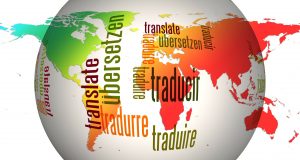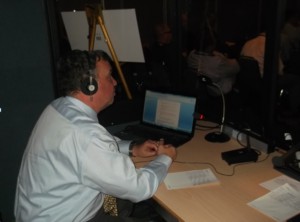I spent a few years growing-up in France, where most of my family resides. Meeting one of my older female cousins who was a pharmacist, I referred to her as “la pharmacienne”. She corrected me immediately with some degree of authority in her voice: she is “le pharmacien” and not “la pharmacienne” which, according to her and older usage, was the pharmacist’s wife.
In October 2015, a quarter of a French opposition member of parliament’s sessional allowance was retained as a sanction because he insisted during a parliamentary debate on calling the female chairing the session “Madame le président” instead of “Madame la présidente”.
Opposition caucus rallied to the defense of the member of parliament in question arguing that this “intolerable” sanction punished correct usage of the French language. Even the authoritative but conservative guardian of the purity of the French language, the Académie Française, came to the defense of the member, but to no avail. The sanction stood.
More about the stance of the Académie Française in a minute.
No doubt that any French-speaking person ran at least once into the tricky issue of feminisation of occupations, titles or functions or cringed at hearing a feminisation that sounded mocking or unusual.
Feminisation of occupations in French is an old, complex, delicate, sensitive and vexing issue.
There are two aspects to the problem: the evolution of feminisation of occupations and regional differences.
a) Evolution:
Whereas we have achieved today relative gender equality in occupations, at least in what we would call the “developed world”, we used to emphasize gender differences as recently as in the 19th century and certainly much further back. There were female occupations and male occupations. Such male occupations or titles were “général”, “colonel”, “pharmacien”, “docteur”, “président”. While it was inconceivable back then that a “général” could be female, the “général” could be married. Therefore, the wife of the “général” became “Madame la Générale”, the wife of a “colonel” became “Madame la Colonelle” and so forth all the way down the ranks.
The near equality that was achieved in modern times posed delicate language issues, especially in France. A large part of the younger female population, in part under the influence of the emerging feminist movement, insisted that their professions or titles should be gender specific , which meant that feminization thereof should be based of the occupation and not on their marital status. Therefore, “l’avocate” tended to refer to a female lawyer and no longer to the wife of a male lawyer, “la maîtresse” is a female teacher, “la députée” a female member of parliament.
This momentum towards feminisation of occupation names should however be qualified: the academic world is still lagging behind: the masculine form “professeur”, “écrivain” are still preferred in France. Also, some names cannot be feminised because of a sexual connotation (people may chafe at “le sauteur en hauteur” becoming “la sauteuse en hauteur”) or because the occupation’s name has the word “homme” built in it: “homme-grenouille” for “frogman” or “barman” for bartender.
A funny note about evolution: feminization of “directeur” into “directrice” is acceptable for some high ranking occupations but not for others. “Directrice” clearly suggests a school principal, but not a senior female civil-servant who is still addressed as “Madame le Directeur“. So, one may conceive a meeting between “Madame le Directeur” and “Madame la Directrice”.
b) Regional differences:
Quebec has been the most dynamic French-speaking jurisdiction in the feminization of names of occupations, titles and functions. As early as 1979, the “Office québécois de la langue française” recommended that a feminine equivalent be created for all names of occupations, titles and functions. Feminization first appeared in administrative texts, then in collective agreements, became the norm in publications and had now permeated in everyday language. Words such as “professeure”, “auteure” or “mairesse” have long existed along the banks of the St.Lawrence but the very conservative Académie Française repudiates them. In Belgium, feminization of names of occupations, titles and functions are governed by an executive order dating back to 1993. A guide produced for the general public, the “Guide de feminisation” was published in 1995 (http://www2.cfwb.be/franca/femini/feminin.htm).
Now, the Académie Française…made of unelected and ageing officials who claim their right to dictate how francophones should write and speak. They remind me of the ultra-conservative Board of Trade that governs and amends (very slowly) laws governing soccer. The Académie Française stays put on its traditional position by being reluctant to approve almost any form of feminisation of titles or functions. In an opinion issued in 2002, it writes that “ the application or free interpretation of feminization “rules” declared often arbitrarily by certain French or francophone organizations has lead to a large number of barbarisms” and the systematic and impulsive selection of feminized forms creates […] inside the language a form of segregation that is inconsistent with the stated objective.” I wonder that that “stated objective” might have been.
The controversy is unlikely to end anytime soon, particularly in France.




